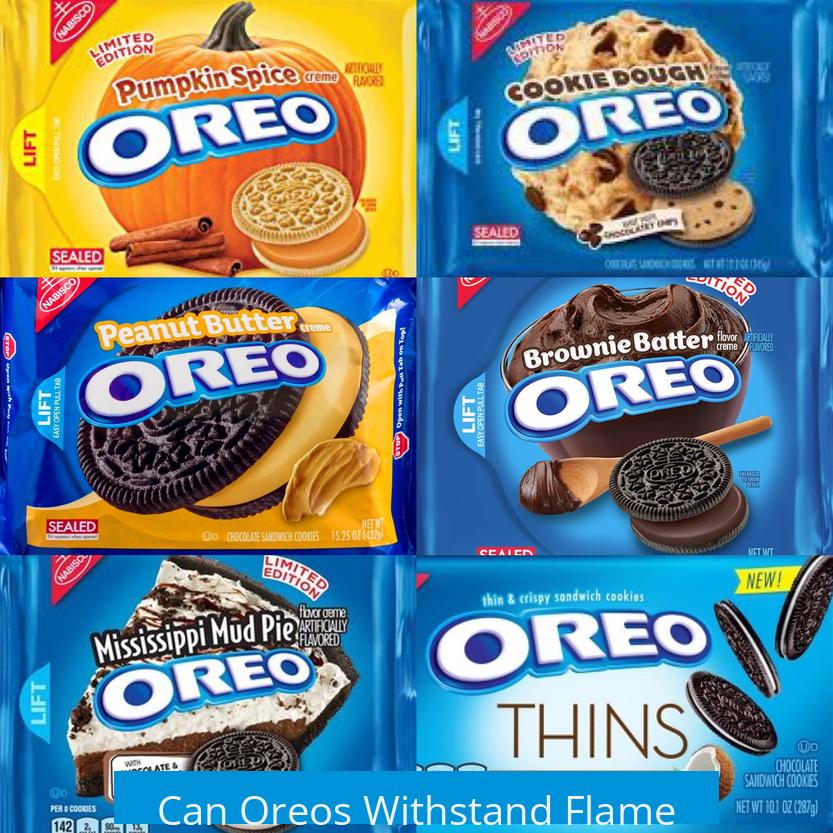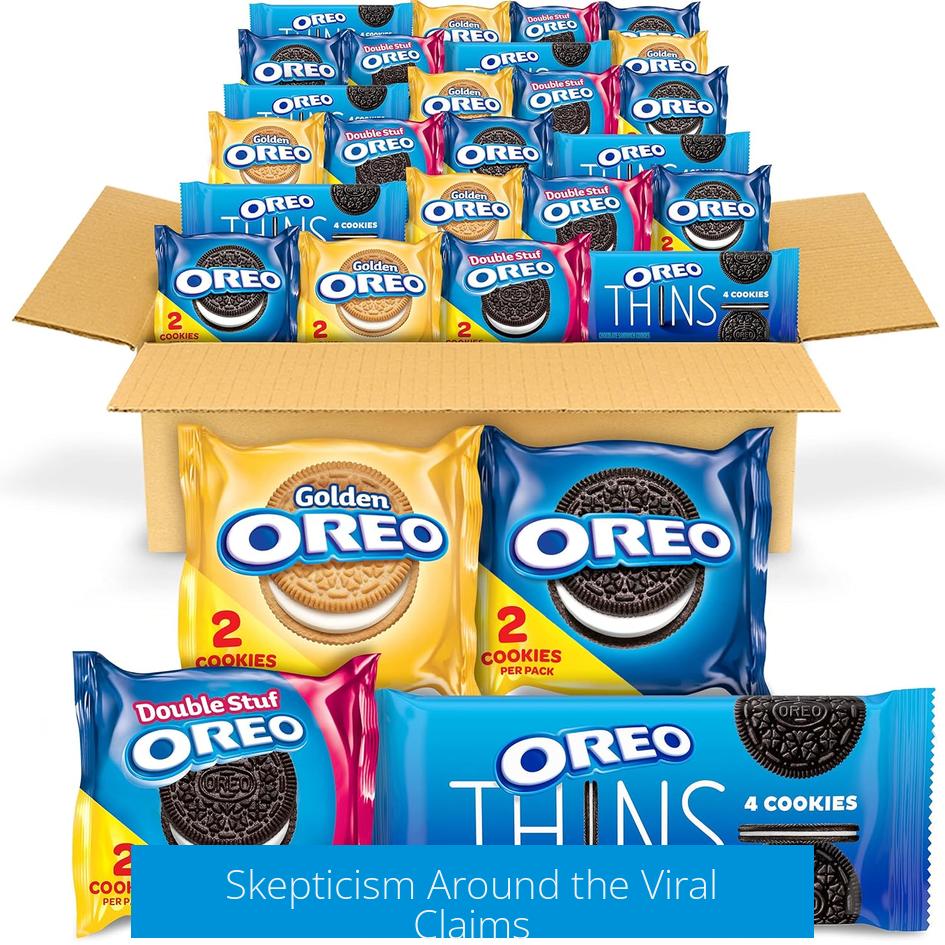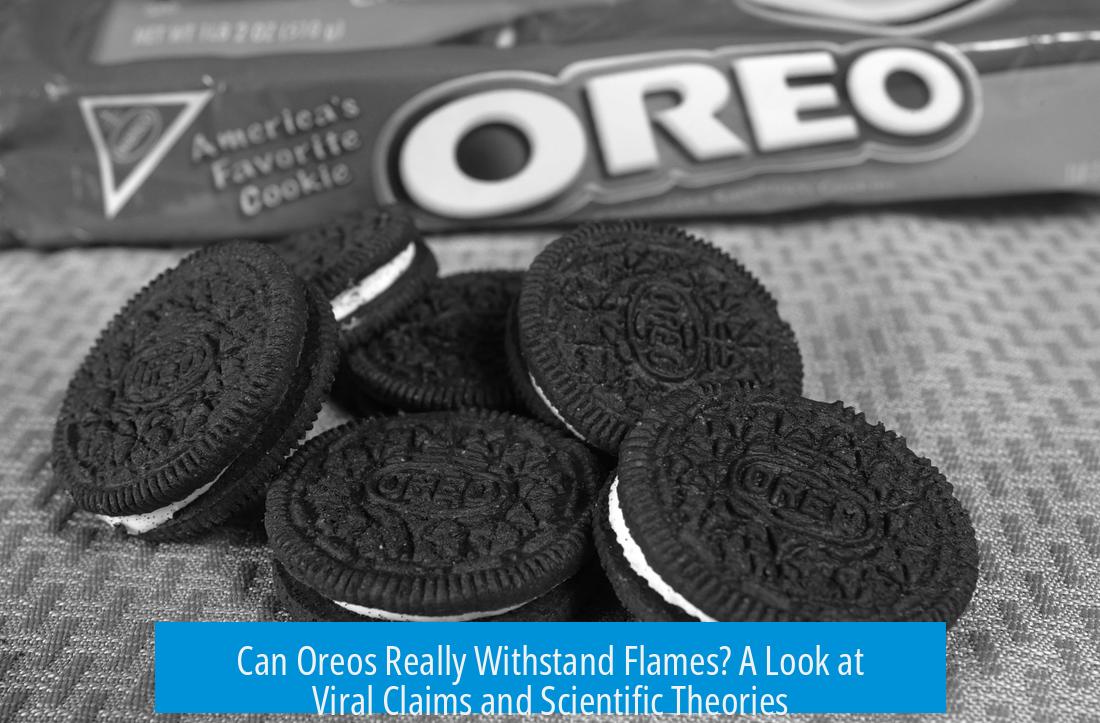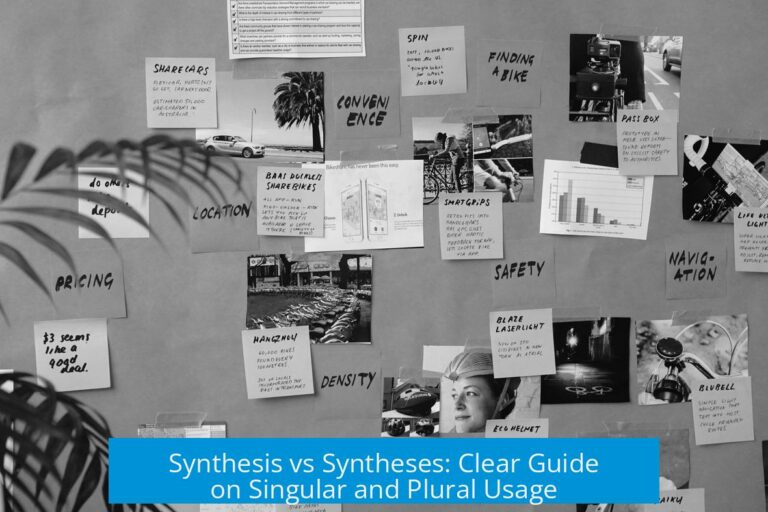Can Oreos Withstand Flame?

Oreos do not truly withstand flame; instead, their apparent resistance is due to rapid charring and the way heat affects their structure. This misconception stems from viral videos showing Oreos exposed briefly to blowtorch flames, which appear not to catch fire. These clips often mislead viewers into thinking Oreos are flame-retardant, but the reality involves basic combustion and heat transfer principles.
Understanding the Viral Videos
Videos show Oreos exposed to short bursts of intense flame, like a blowtorch, which is different from regular fire. The heat heats the cookies rapidly, causing smoke and some char on the surface. However, the flame exposure is so brief that the entire cookie does not ignite or burn completely.
This effect is similar to past viral claims about other foods, such as McDonald’s cheeseburgers, where brief flame contact fails to produce significant burning. The key factor is the moisture content inside the food, which absorbs heat by vaporizing water instead of supporting combustion.
Physical Makeup of Oreos and Combustion Behavior
- The Oreo’s outer cracker contains air pockets and is already dark brown, which masks visible charring.
- When exposed to rapid, intense heat, the surface carbonizes quickly, creating a protective layer that slows heat transfer to the interior.
- The carbonized layer acts as an ablative shield, “sacrificing” itself by forming carbon dioxide rather than allowing the cookie to ignite fully.
Scientific Explanation and Theories
One theory suggests that the outer Oreo acts like an ablative plate, rapidly converting into carbon. This refractory layer resists further combustion by insulating the interior cookie from heat conduction.
However, this is largely a surface effect and only occurs under specific conditions like brief blowtorch exposure. Prolonged heat would eventually burn the entire cookie, as demonstrated in typical burning scenarios.
Skepticism Around the Viral Claims

- Some viral footage may be staged, with “Oreo” replicas made from ceramic or plaster.
- The presence of reversed printing on an Oreo in the videos raises doubts about authenticity.
- Experts warn against taking viral videos at face value — true flame retardant materials require specific chemical properties not found in cookies.
Heat Source and Application Differences
Blowtorches apply highly concentrated heat in a short time. This differs from gentle heating methods that allow water inside food to vaporize and material to burn more thoroughly.
Similar principles explain why a packed snowball chars superficially under a blowtorch but melts completely over a normal flame. The rapid carbonization at the surface acts as a shield from further heat penetration.
Key Takeaways
- Oreos do not inherently withstand flame; they char quickly but do not ignite with brief, intense heat.
- Their structure causes rapid surface carbonization, creating a temporary protective layer.
- Viral videos may be misleading or staged and should be viewed skeptically.
- True flame resistance requires chemical properties Oreos do not possess.
- Heat application method strongly affects how materials burn or char.
Why don’t Oreos catch fire immediately when exposed to a blowtorch?
Oreos contain little water but their surface carbonizes fast under heat. This creates a protective layer that chars instead of burning through quickly.
Is the Oreo’s resistance to flame real or a fake trick?
Some videos are faked using molds or plaster Oreos. Real Oreos do char but don’t burn easily because of their composition.
What happens to the Oreo’s surface when heated by flame?
The outer cookie layer turns into carbon, forming a barrier. This layer burns slowly and protects the inside.
Would NASA use Oreos as flame-resistant materials if they were truly fireproof?
No. The idea that Oreos are fireproof is a myth. Real flame-resistant materials are far more advanced and tested.
How does the air in the Oreo cookie affect its combustion?
The air-filled structure helps slow down burning by reducing heat transfer, so the Oreo chars rather than ignites quickly.





Leave a Comment